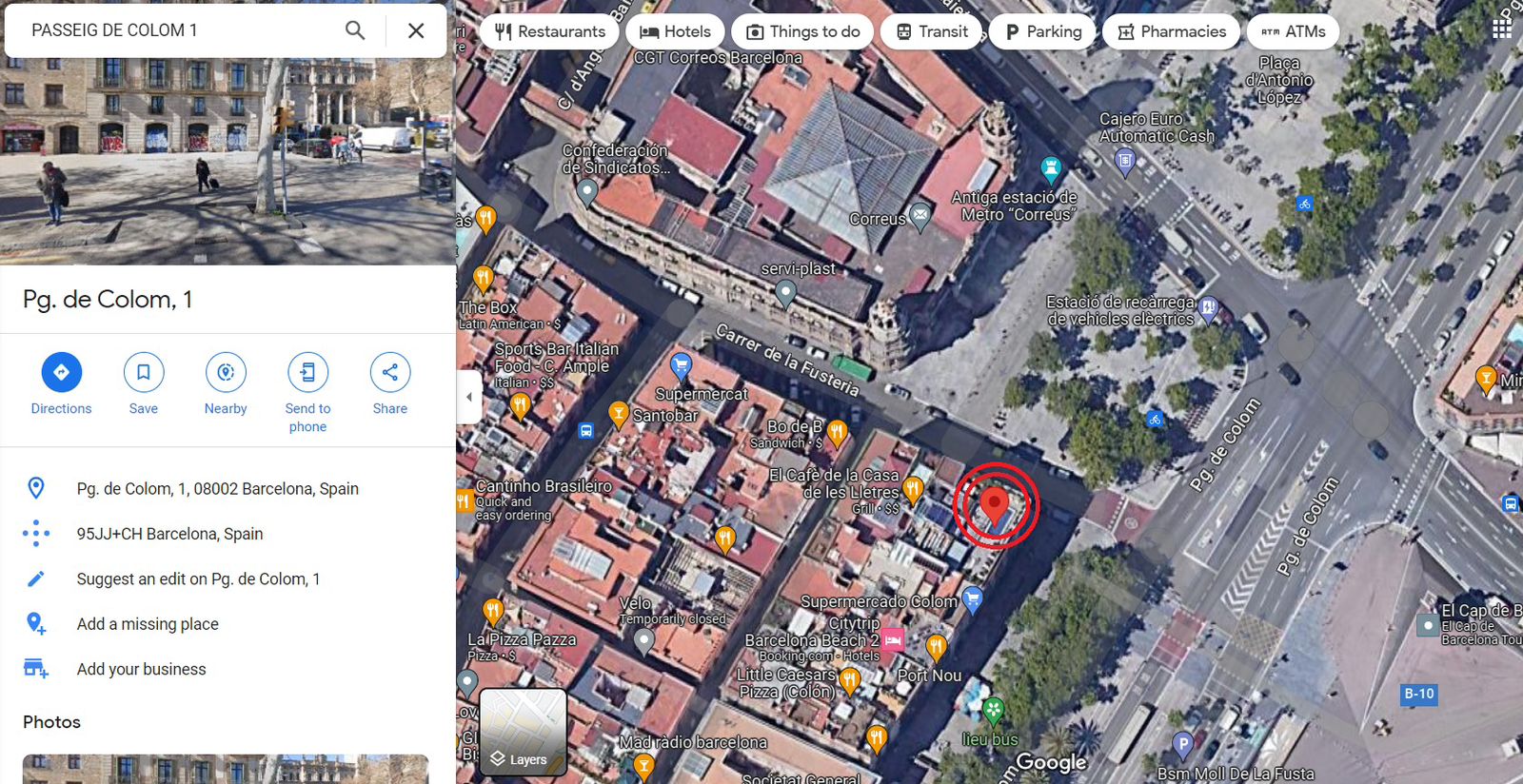Getting There
We recommend guests to rent a car (from the airport upon arrival) for easier mobility as well as a better way to explore the city. Nonetheless, there will be mini bus services provided for to and from the venue.
Bus Schedules
From the pickup point to the Ceremony & Reception
Pickup time 3:15PM Passeig De Colom, 1
Bus Schedules of La Baronia to City Center Drop Off
First trip 11:30pm Second (last) trip 1:30am
Accommodation Suggestions
We recommend to book your stay near the Barcelona City Centre. There are multiple Airbnbs available as well as hotels to choose from.
While L’ Eixample, El Raval, El Born and Barri Gòtic are the specific areas (barrios) we would recommend that have hotels and Airbnb’s you can book your stay at. They are ideal locations to experience Barcelona and its beauty.
About La Baronia
Located 40 minutes outside downtown Barcelona, La Baronia was built in the beginning of the 20th century by order of Mr. Francisco Trinxet and designed by Gaudi’s protégé to be an art nouveau building.
After the civil war, the family regained the house, returning it to its original glory by rebuilding from the wooden ceilings and restoring original floors that had been totally destroyed.
Once again, they filled the house with antique furniture and works of art of exquisite taste: ancient Roman and baroque carvings and paintings from different eras that still today, adorn the halls and dining rooms of La Baronia.
Surrounded by woods and nature, La Baronia enjoys excellent views overlooking the village of Sant Feliu de Codina and the Vallès Oriental. On clear days, it reveals the horizon of the Mediterranean Sea.
Sites to see
Best shopping areas in Barcelona
A tip:
Remember that if you live outside the European Union, you can request a VAT refund for your purchases in Barcelona. To do this you need to request a tax-free form when you make a purchase.
This procedure can now also be done in the city centre, at the tourist information offices.
The city of Barcelona in eastern Spain offers a whole host of options, from hundred-year-old shops where you can take home a little part of the most traditional Barcelona, to the latest, avant-garde designer products, with gourmet shops where the city’s flavours are the souvenir.
All of this in one of the biggest open-air shopping routes in Europe; known as the Barcelona Shopping Line, it covers five kilometres through the city’s different districts whose architectural and cultural environments make shopping in Barcelona a unique experience.
You can enjoy shopping in Barcelona while you soak up the city’s character, its contrasts of local and cosmopolitan, unconventional and traditional; its architecture, culture, and food.
Grab your city map and mark these eight shopping areas to suit all tastes and pockets; they should figure among the holiday experiences of your trip to Barcelona.
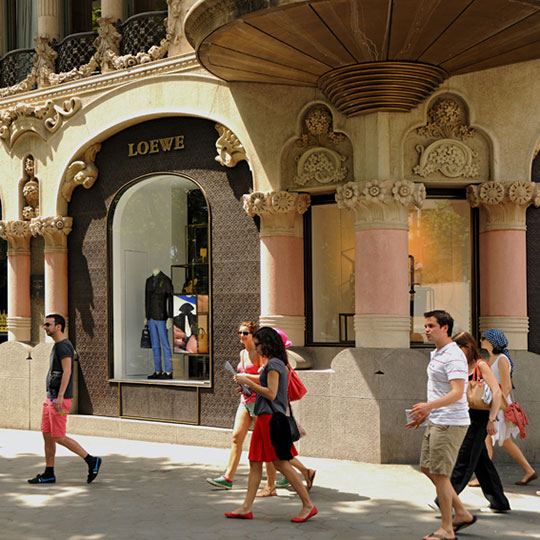
Paseo de Gràcia. Barcelona’s "Golden Mile".
Where. The Paseo de Gràcia is one of the most iconic boulevards in Barcelona and flows between the Plaza de Catalunya and Calle Mayor de Gràcia, crossing the Eixample neighbourhood of Barcelona.
What to buy. Here you can find the biggest concentration of the most exclusive fashion and accessory shops in Barcelona: national and international brands that will delight lovers of the finest haute couture and prêt-à-porter.
Don’t miss… Keep alert during your stroll down this iconic street because in between the luxury shop windows stand some of the most representative examples of the city’s Art Nouveau architecture, works by Gaudí and his contemporaries, such as Casa Batlló, la Pedrera, Casa Amatller and Casa Lleó Morera.
How to get there. Metro Stations: Catalunya (L1/L3), Passeig de Gràcia (L2/L3/L4) and Diagonal (L3/L5). Bus lines: 7, 22, 24 and V15.

Diagonal: shopping centres
Where. Avenida Diagonal is one of the broadest streets in Barcelona and is home to the FC Barcelona Stadium and the Sagrada Familia.
What to buy. Along the nearest stretch of Paseo de Gràcia you will continue to find international and luxury brands. Crossing La Plaza de Francesca Macià you can find some of the most popular shopping centres in the city, with a very diverse selection of shops, perfect for picking up every conceivable kind of souvenir.
Don’t miss… La Diagonal crosses one of the most modern parts of Barcelona and along the way you can take advantage of the trip to admire some notable buildings such as Casa Comalat and Pedralbes Palace.
How to get there. Metro Stations: El Maresme | Fòrum (L4), Glòries (L1), Monumental (L2), Verdaguer (L4), Diagonal (L3/L5), Maria Cristina (L3), Palau Reial (L3) and Zona Universitària (L3/L9). Bus lines: 6, 7, 22, 24, 33, 34, 63, 67, 75, 78, 113, 136, B20, B23, V9, V15, V17, V25, V31, H6 and H8.
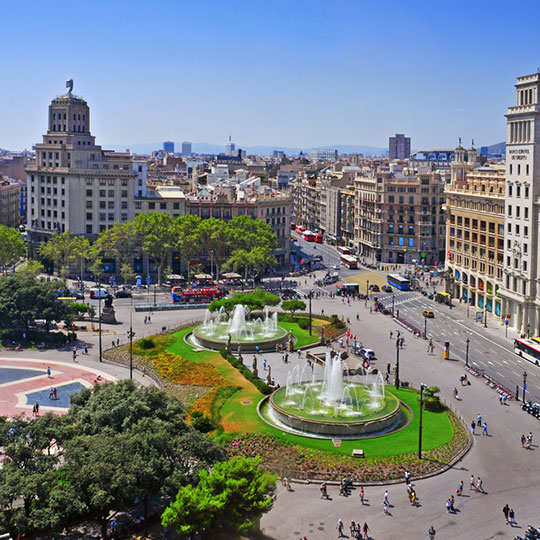
Plaza Catalunya: fashion for everyone
Where. The area around Plaza de Catalunya, in the heart of Barcelona, is another of Barcelona’s shopping hubs. Right next to the square, Portal de l’Àngel and Calle Pelai are also full of interesting shops.
What to buy. There is a department store and a large range of electronic goods outlets right on the square itself. Don’t miss the chance to wander up Portal de l’Àngel, a pedestrian street that connects Plaza de Catalunya with the old part of Barcelona; here you can find the big-name fashion chains with something for everyone. There are also several shoe shops and jewellers as well as some traditional “hidden gems”; in fact, this is the place to buy typical turrón (a kind of nougat) and artisan ice cream. The nearby Calle Pelai (also leading off Plaza de Catalunya) is also packed with fashion boutiques.
Don’t miss… Make a stop at Plaza de Cataluña and get caught up in the whirlwind of people toing and froing all over the square. And don’t forget to look up when you pass through Portal de l’Àngel as here you can spot some of the prettiest residential buildings in the city. On this same street you can also see the famous gigantic thermometer on the façade of Cottet and the oldest fountain in Barcelona.
How to get there. Metro Stations: Catalunya (L1), Plaça Catalunya (L3/L6/L7). Bus lines: 47, 52, 55, 59, 67, H16, V13, V15, V17 and D50.
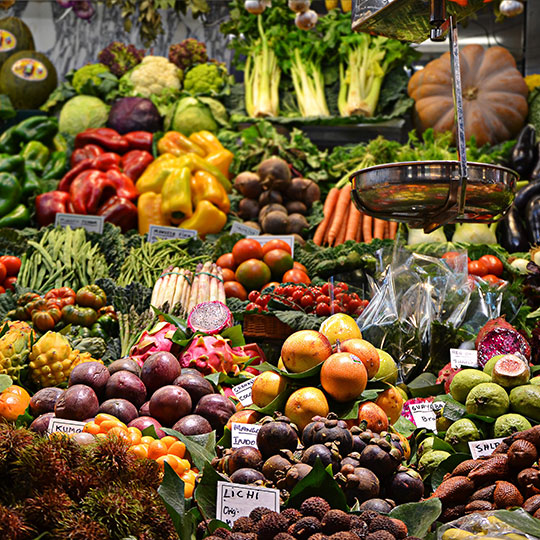
La Rambla: souvenirs and La Boquería Market
Where. La Rambla is the most famous street in Barcelona and links Plaza de Catalunya with the old port.
What to buy. It is one of the city’s main tourist hubs and a good place to shop for souvenirs. You can also find plenty of traditional confectioners for buying sweet souvenirs. Also along La Rambla at 91 is the iconic market La Boquería, which apart from being a tourist attraction for its buzzing atmosphere and Art Nouveau architecture, is also a good place to stock up on typical local products. How about some local nuts or a bottle of olive oil, the “liquid gold” of the Mediterranean?
Don’t miss… The market entrance, decorated with elements of Art Nouveau wrought ironwork; the newspaper kiosks and flower stalls dotted along the entire length of the street; the Virreina Palace and El Liceo Theatre; the human statues; and in the port, the Monument to Christopher Columbus.
How to get there. Metro Stations: Catalunya (L1), Liceu (L3) or Drassanes (L3). Bus lines: V13 and 59.

El Raval: alternative and vintage
Where. To the south of La Rambla is the Raval district, one of the areas that has undergone the most transformation in recent decades.
What to buy. This area offers a great range of alternative shops. On Calle Tallers you can find ethnic and Goth style clothes, often handmade, as well as music shops. A few metres along, Calle Riera Baixa is a must-stop for lovers of vintage fashion and decoration.
Don’t miss… There are some interesting tourist sites in the Raval neighbourhood (the old Santa Creu Hospital, a World Heritage site; the CCCB -Barcelona Centre for Contemporary Culture-; the cat sculpture “El Gato del Raval” by Fernando Botero; MACBA, the Barcelona Museum of Contemporary Art; the Güell Palace and the Church of Sant Pau del Camp), but what you really can’t miss out on is soaking up the atmosphere – the aromas, flavours and multicultural environment of one of the areas with the most personality in Barcelona.
How to get there. Metro Stations: Sant Antoni (L2), Universidad (L1/L2), Paral·lel (L2, L3) or Liceu (L3). Bus lines: 21, 55, 59, 67, 88, 120, 121, v11, V13, V15, H14 and D50.
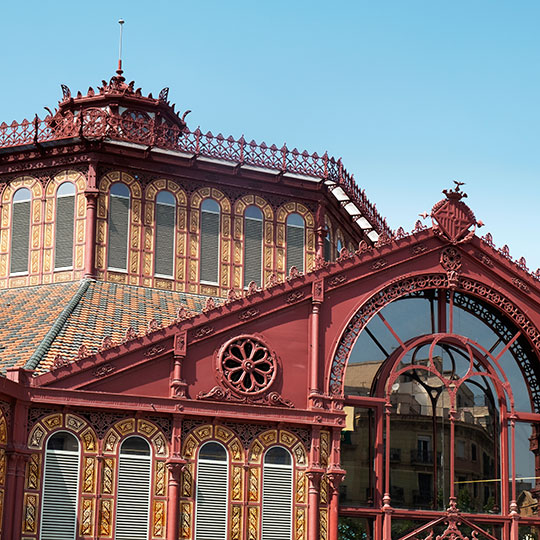
Sant Antoni: local products and book shops
Where. Close to El Raval is the district of Sant Antoni, a less touristy area.
What to buy. This area is home to eight local trading associations that offer all types of products, catering to local customers. Although the trade is more local, you can also find some designer shops, well-known brands and traditional businesses selling hand-crafted items. In this neighbourhood you can also find some of the oldest and most unique book shops in Barcelona as well as the popular Sant Antoni Market which, apart from selling fresh produce every day, fills up on Sundays with stalls selling second hand books and stamps.
Don’t miss… The market itself is housed in a typical example of late 19th-century architecture.
How to get there. Metro Stations: Sant Antoni (L2). Bus lines: 13, 20, 24, 37, 41, 55, 64, 91, 120, 121, 141 and 144.
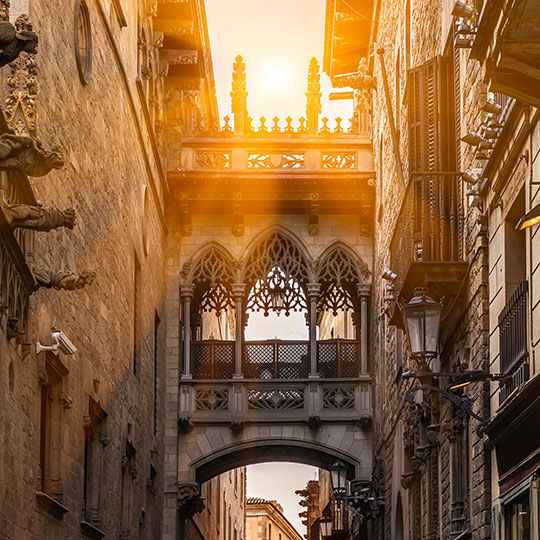
The Gothic Quarter: traditional Barcelona
Where. This, with El Born, is the oldest part of Barcelona, between La Rambla, Plaza de Catalunya, Vía Layetana and the port.
What to buy. The Gothic Quarter is the best place to find Barcelona’s traditional shops. Here you can find shops selling antiques, books, handmade artisan clothing, hats, cutlery… and all types of one-off shops.
Don’t miss… Given its age, this area is home to most of Barcelona’s historical sites: the City Hall and the Palace of the Generalitat; the Cathedral and other Gothic churches such as Santa Maria del Pi, as well as the Baroque Sant Felip Neri Church; the old Jewish Quarter and the Plaza del Rey, among many others.
How to get there. Metro Stations: Sant Antoni (L2), Jaume I (L4), Liceu (L3) and Drassanes (L3). Bus lines: 47, 59, 120, H14, D20, V13, V15 and V17.

El Born: trendy and bohemian exclusivity
Where. Crossing Vía Layetana, between the Gothic Quarter and La Ciudadela Park, you will find the area of El Born, another of the oldest parts of Barcelona.
What to buy. Despite being located in old Barcelona, the traditional shopping area of El Born has opened up to shops selling fashion, accessories and gifts, with some of the most prominent and up-market labels, but with a slightly boho, vintage feel about them, far from the luxury stores on Paseo de Gràcia. In the north part of El Born, close to Ensanche, you can find some shops specialising in comics and manga comics.
Don’t miss… The Picasso Museum of Barcelona, the Palau de la Música Catalana concert hall, the Basilica of Santa María del Mar (a real gem of Gothic architecture), Santa Caterina Market, the European Museum of Modern Art, La Ciudadela Park, the Chocolate Museum, the iconic Arco de Triunfo (triumphal arch) or La Barceloneta beach.
How to get there. Metro Stations: Jaume I (L4) and Barceloneta (L4). Bus lines: 19, 47, 59, 120, V15, V17, V19, H14 and H16.
Currency:
All businesses accept Euros as the main currency. Tipping is appreciated but not required.
Siesta Time and Store Hours:
Unlike any other country in the world, Spain still has their unique break time. Between 2pm to 4pm, most shops are closed so you can take a siesta too. Groceries are closed on Sundays.
Dinner Time:
Dinnertime in Spain is a little different too. Dinner is usually between 9PM-11PM. You may find yourself sitting in a restaurant a bit early but La Merienda (Mid-Afternoon Snacks) are usually on the menu.
Getting around:
How to get from Barcelona airport to the city Centre: https://barcelonalowdown.com/get-barcelona-airport-city-centre/
Public transport:
Taxis are a quick and easy way to get around in Barcelona. The distinctive black and yellow cabs operate twenty-four hours a day, seven days a week, and in most areas, you will only usually have to wait a minute or two to flag one down in the street.
Alternatively, there are more than two hundred taxi ranks at key locations throughout the city, where you will usually find a line of taxis waiting.
When the taxi is available for hire, the sign on the roof has a green lamp illuminated on the driver’s side. There will usually also be a sign on the front windscreen with the word “LLIURE” or “LIBRE” (“Free” in Catalan and Spanish).
Taxi Apps
Free Now
Free Now (previously My Taxi) is the app with the largest fleet of taxis in Barcelona. Free Now works like Uber. You download the app to your phone, create an account, and add your payment details, and you’re ready to go.Free Now is available for both Android and IOS.
Uber
The popular ride-sharing app operates in Barcelona using a fleet of official Barcelona taxis. Although Uber does have fewer taxis than Free Now, if you already have Uber installed on your phone, it saves you from having to install another app and set up an account.
Cabify
The most widely available ride-hailing app in Barcelona which uses private hire vehicles is Cabify. The Cabify app is similar to Uber, except that the first time you hail a car in Barcelona, you will have to wait fifteen minutes. This is due to a local bylaw which restricts the use of private hire vehicles. There is no restriction for subsequent journeys. The main advantage of Cabify is that, when travelling with children, you can book a vehicle with a child seat.
Drive yourself
Electric Scooter rentals:
Scooters are a familiar sight on the streets of Barcelona. If you are interested to go around via electric scooters you may want to check out this link of types of scooters available and where to rent them.
https://barcelonalowdown.com/electric-scooter-rental-in-barcelona/

